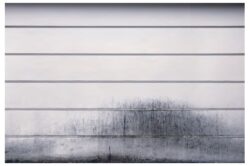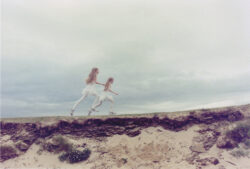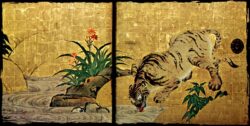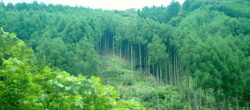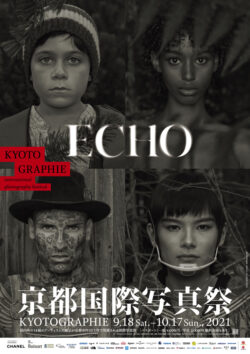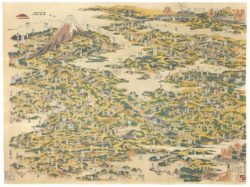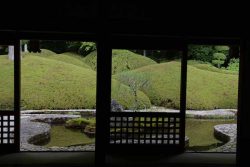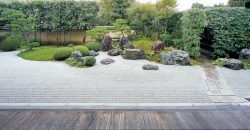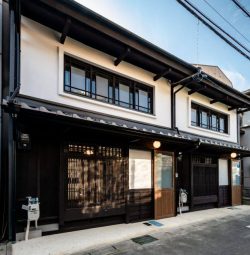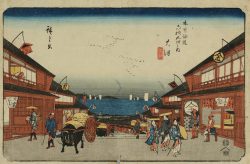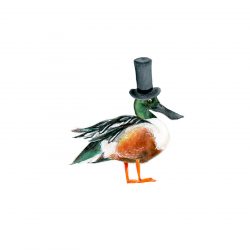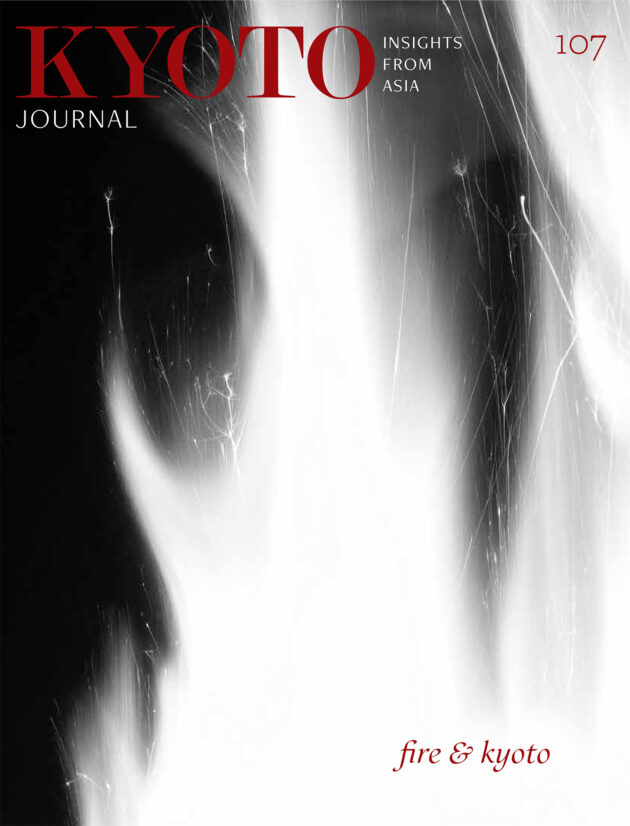Posts Tagged ‘Kyoto’
The Great Fire of Kyoto, 1788: A Forgotten History
It was mid-afternoon on the last day of the month when fire broke out just east of the Kamo river and south of the small Donguri Bridge (south of Shijō). By 6pm flames had spread as far as Teramachi, a thoroughfare containing many temples. By midnight it was at the Shimogamo Shrine. At 2am the Dairi (today called the Gosho, or imperial palace) was threatened; shortly thereafter the main walled section of the shogunal compound, Nijō Castle, was alight. Rain fell, but it was not enough, and by morning 201 temples, 37 shrines, 36,797 common dwellings and a total of 1,424 city blocks in 20 separate locations were gone.
Read MoreCharcoal-inspired Sumi Artistry
The Kyoto-based artist known simply as Hakama uses sumi (charcoal) as his medium in creating innovative artworks with a subtle but impressive aesthetic imbued by direct use of natural materials transformed by fire.
His work was featured in KJ 107, ‘Fire & Kyoto.’
Read MoreKyoto Flame: sparking untold narratives in Kyoto
Charles Roche, long-term Kyoto resident, reminisces about The Flame, a unique monthly community-based storytelling event held at his hospitable Papa Jon’s Eatery. As figurative keeper of the flame for three years, Charles sparked a conflagration that lit up the local scene.
Read MoreKyotographie 2024, “Source”: Wellsprings of Creativity
For the past 13 years, co-directors Lucille Reyboz and Nakanishi Yusuke have invited the people of Kyoto – old, established families to tourists just passing through – to engage in a month-long jeu d’esprit inspired by their ecumenical embrace of all aspects of the photographic medium, from crude pinhole cameras to high-powered scientific instruments, and everything else in between.
Read MoreWhite Lines
Horizontal lines on an earthen wall. Found on the outer walls of temples, some shrines, and the Imperial Palace, these lines indicate close historical ties to the Imperial family. Some temples have three or four lines, but the walls of monzeki jiin, where members of the Imperial family have served, are decorated with five.
Throughout the city of Kyoto, these lines are so ubiquitous as to go unnoticed by visitors and residents alike. For me, they have a mysterious beauty. Amidst all the classic scenes of Kyoto, I have found myself photographing these simple walls again and again. They are images which were literally painted by the weather.
Read MorePhotography Without Borders: Kyotographie 2023
One of the pleasures of KYOTOGRAPHIE has always been the opportunity to explore Kyoto spaces that are not normally open even to longtime residents, and to appreciate the imaginative ways in which the exhibitions have been staged in them. This year, the number of main venues has expanded to 15, while their geography has contracted, presumably to accommodate the influx of day trippers and international visitors. At the same time, the number of KG+ satellite exhibitions in far-flung locations around town has increased to 92, in addition to the 10 KG+ Select and 9 Special exhibitions.
Read MoreKyoto’s Suburban Rice-fields
As recently as the early 20th century, verdant and productive rice fields dominated the flat lands on the northern outskirts of Kyoto, squeezing small villages up against surrounding foothills. However, in post-war years this fertile farmland has been encroached on and overwhelmed by waves of suburbanization.
Read MoreKYOTOGRAPHIE 2022 “One”
Writing in their preface to the first KG catalogue, Reyboz and Nakanishi averred that “KYOTOGRAPHIE’s intention was always to stage the work in the shrines, temples, machiyas, tea houses and other emblematic locations of the city. But by using scenographers and designers to ensure that the photography and the venues will each work to enhance the other, it was our hope that by engaging the participation of Kyoto’s traditional artisans, a broader spectrum of Kyoto society will feel that this is truly their festival.” The creative fusion we are seeing after ten years seems to confirm their vision.
Read MoreNanzen-ji
As a special online preview to our ‘Water in Kyoto’ issue, Paul Rossiter’s poem ‘Nanzen-ji’ reveals an example of how vitally water is intertwined with Kyoto’s rich cultural legacy.
Read MoreFeeling the trees shivering: endangered environmental knowledge in northern Kyoto
For more than 400 years, villagers in the northern mountains of the Yamashiro basin (an area now incorporated to the modern administrative system of Kyoto city) have developed a special relationship with trees—in particular, with one specific type of tree, the cedar or Cryptomeria japonica, called sugi in Japanese.
Read MoreKYOTOGRAPHIE 2021 “Echo”
Japan’s first truly international art festival was born of the 2011 Great East Japan Earthquake, tsunami, and nuclear accident, while this year’s edition, entitled “Echo,” has gone ahead amid the challenges posed by the ongoing COVID-19 pandemic. Exploring such themes as natural disasters, the pandemic, and sexual abuse, “Echo” might seem unremittingly dark, but among the 14 main exhibitions a current of profound and non-facile hope pulsates to the surface in unexpected ways.
Read MoreThe Dento Bento
This memorable article by one of Kyoto Journal’s earliest regular contributors, Jonah Salz, on how Kyoto presents its living cultural heritage to visitors, appeared in our third issue, in 1987. Remarkably, it has hardly aged at all. Meanwhile, Jonah is still waiting – patiently – to see “dento bento” become a meme. Maybe this time…?…
Read MoreEXTRA!
KJ100: EXTRA! On this page we present additional views, impressions and visions of Kyoto, as an ongoing project complementing our print edition, KJ100: ‘100 Views of Kyoto – a Tribute.’ Kyoto View 18: Finding Home – Lauren W. DeutschWhen I passed a huge statue of Kannon, standing guard 24/7 by the door of one of…
Read MoreStructures of Kyoto, Interrogated
Structures Of Kyoto: Writers in Kyoto Anthology 4. Edited by Rebecca Otowa & Karen Lee Tawarayama, 2021, Writers in Kyoto, 172pp., ¥1207. Structures Of Kyoto: Writers in Kyoto Anthology 4, edited by Rebecca Otowa and Karen Lee Tawarayama, features contributions from twenty-four writers. As was the case with WiK’s previous anthologies, it is an eclectic…
Read MoreKyoto Dwelling
KYOTO DWELLING: A YEAR OF BRIEF POEMS by Edith Shiffert, Charles E. Tuttle Company 1987, 115 pages The poet Edith Schiffert resided in Kyoto from 1963 until her death, at the age of 101 in 2017. Her poems appeared often in KJ over the years. This review of her classic Kyoto Dwelling, from KJ7, Summer…
Read MoreThe Big Picture: Birds’-eye Overviews of the Japanese Archipelago
Yoshida Hatsusaburo (1884-1955) was known as “the modern Hiroshige” and created over 2,000 maps in his lifetime.
Read MoreSome Gravel, Some Stones: Nature, Art and Spirit in Japanese Gardens
Stephen Mansfield interviews Marion Poschmann, whose novel set in Japan, The Pine Islands, was winner of the Berlin Prize for Literature and shortlisted for the Man Booker International Prize.
Read MoreHidden Masterpieces
As canals are to Venice, gardens are to Kyoto, even if mostly concealed behind the walls of private residences, or within sub-temples that have not transformed themselves into tourist attractions.
Read MoreHachise launches dedicated page for Otsu machiya properties
Our friends at Hachise have launched a new page for their beautifully-renovated Otsu properties.
Read MoreAn Old Posttown Makes a Comeback
The City of Otsu and Hachise, a realtor specialising inmachiya renovations, are exploring ways to restore Otsu’s glory as a station on the old Tokaido overland route
Read MoreA Definitive Ranking of the Ducks of Kamogawa
We’ve taken the liberty of identifying the most common species of duck inhabitants on the Kamo River, and ranking them from ugliest little duckling, to virtual bird of paradise.
Read More




